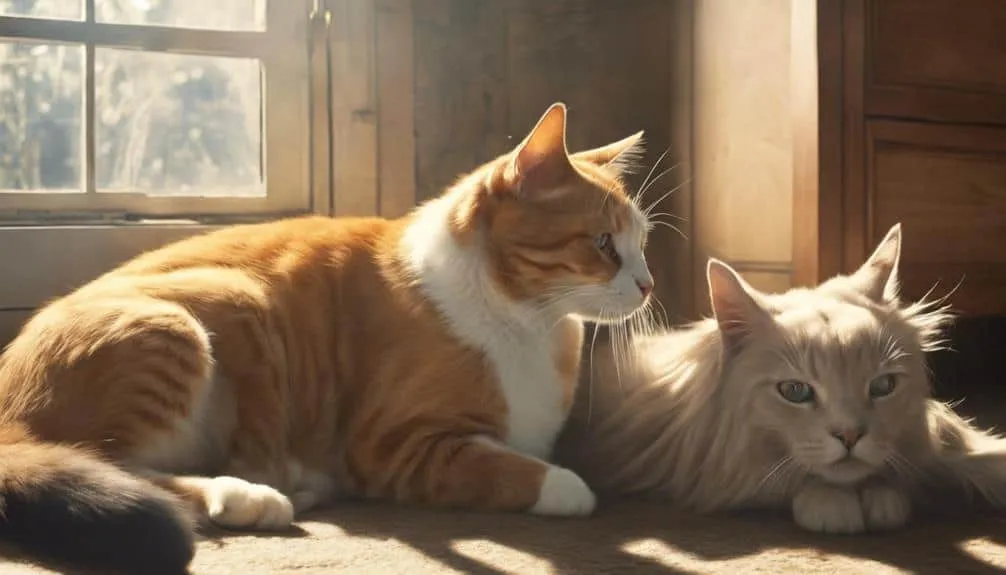The Best Fluffy Pancakes recipe you will fall in love with. Full of tips and tricks to help you make the best pancakes.

When it comes to the loyalty debate between cats and dogs, both pets show their devotion in their own special ways. Dogs are all about showing their loyalty in big, enthusiastic ways, like wagging their tails non-stop. On the other hand, cats are more subtle in how they express their loyalty, often by quietly following you around or snuggling up next to you.
Understanding these different ways of showing loyalty can really strengthen the bond between you and your furry friend. Whether your pet is loud and proud like a dog or quiet and understated like a cat, each style adds a unique layer to the discussion. By observing their behaviors, we can gain a deeper understanding of the complex world of human-animal relationships and the various ways our pets demonstrate their devotion.
Exploring this loyal debate between cats and dogs really highlights the richness of our interactions with these furry companions. It's fascinating to see the different ways they show their loyalty, and it deepens our appreciation for the special connection we have with them. The playful rivalry often brings out amusing anecdotes and stories, showcasing the distinctive personalities that each species offers. Amidst this spirited debate, one can’t help but ponder the notion of a forbidden love between cats and dogs, a testament to their contrasting natures yet undeniable charm. This juxtaposition further enriches our understanding of their unique roles in our lives, reminding us that love can transcend even the most unlikely boundaries.
Key Takeaways
When it comes to loyalty, dogs tend to show it by wagging their tails and jumping around in excitement. They're just so eager to please and show their love. On the other hand, cats may demonstrate their loyalty in a more subtle way by quietly following you around the house and snuggling up close to you. They like to be near you and show their affection in their own way.
It's important to remember that loyalty can vary between different types of pets and even among individual animals. Each pet has its own personality and way of showing loyalty. By understanding how your pet expresses loyalty, you can strengthen the bond between you and your furry friend.
Whether you have a dog or a cat, both can offer emotional connections in their own special way. Dogs with their enthusiastic gestures and cats with their quiet companionship both have unique ways of showing loyalty. It's all about appreciating and recognizing the ways in which our pets express their love and devotion to us.
The Loyalty Debate: Dogs Vs. Cats

When we talk about loyalty in dogs versus cats, it's like comparing big, bold gestures to quiet, subtle signals. Dogs are all about showing their loyalty in a loud and proud way. They go crazy with happiness when you come back home, wagging their tails like there's no tomorrow and jumping around with pure joy.
On the flip side, cats have their own unique way of being loyal. They mightn't jump all over you, but they'll follow you around the house, curl up next to you, and purr away happily. It's like they're saying, 'I may be chill, but I'm always here for you.'
Even though cats are known for their independence, they can form deep bonds with their humans and show their loyalty through these quiet, understated actions. It's pretty cool how both dogs and cats can offer emotional connections in their own special ways, right?
Expressions of Loyalty in Pets
Pets can show loyalty in different ways, depending on their personality and species. Dogs, for example, are often very affectionate and will happily wag their tails and jump up to greet you to show their loyalty.
On the other hand, cats may be more subtle in how they express their loyalty. They might follow you around, snuggle up beside you, and purr happily to show their devotion. Even though cats are known for being independent, they can still form strong bonds with their humans and demonstrate their loyalty through these quiet gestures.
Understanding and appreciating these various ways that pets show loyalty can strengthen the bond between you and your furry friend, creating a deep sense of companionship and mutual love.
Cost Considerations for Pet Ownership

Considering how much it costs to have a pet is important for being a responsible pet owner. It's crucial to plan financially to make sure your pet is well taken care of and you're not struggling with money. Getting some budgeting tips can help you handle the expenses that come with having a pet, like vet visits, food, toys, grooming, and unexpected costs. Setting aside a set amount of money each month for your pet can help ease the financial stress and avoid any surprises.
Planning for regular check-ups, vaccinations, and preventive care for your pet can also save you money in the long run. It's smart to have an emergency fund ready for any unexpected expenses that may come up. By including these budgeting tips in your financial planning, you can make sure your furry friend gets the best care without putting your own financial stability at risk.
Cleanliness Comparison: Cats Vs. Dogs
When you compare how clean cats and dogs are, it all comes down to how they groom themselves and their natural behaviors. Cats are super neat freaks – always licking and cleaning themselves to stay spick and span. Plus, they use litter boxes, which really helps contain any mess.
Unlike dogs, cats don't drool or slobber, so that definitely keeps things tidier. Cats also don't tend to bring in dirt or bugs from outside, which is a big plus for cleanliness. And let's not forget, cats usually don't have that doggy smell that can linger around.
Understanding Feline Behavior

Understanding how cats behave involves watching and understanding the small hints and signals they give off to express their feelings and intentions. Cats rely a lot on their natural instincts, which help them decide how to act and react to what's going on around them. Their behavior cues, like flicking their tail, positioning their ears, and making different sounds, can give us a clue about how they're feeling. By paying attention to these cues, we can get a better idea of what our cat likes, what scares them, and how they're doing overall.
Feline instincts play a big role in behaviors like hunting, grooming, and marking their territory, all of which are crucial for their survival in the wild. It's important for us to understand and respect these instincts if we want to have a good relationship with our cats. By recognizing and responding to their behavioral cues, we can make sure we have a strong and rewarding connection with our feline friends.
Frequently Asked Questions
Are Cats or Dogs More Likely to Get Along With Other Pets in the Household?
When you have a mix of pets at home, like cats and dogs, it's important to know how they get along. Cats and dogs have their own ways of interacting with each other, so it's key to introduce them slowly and patiently for a smooth integration.
Do Cats or Dogs Require More Grooming and Maintenance in General?
When it comes to grooming and maintenance, cats and dogs have different requirements. Dogs need more attention when it comes to managing their shedding and keeping their coats well-maintained. This means regular grooming sessions and possibly trips to the groomer.
Cats, on the other hand, are pretty self-sufficient when it comes to grooming. They are excellent self-groomers and often take care of keeping themselves clean and tidy. This means less work for cat owners when it comes to grooming their feline friends.
Can Cats or Dogs Be Trained to Perform Specific Tasks or Tricks?
Dogs can learn all sorts of cool tricks and tasks through clicker training and agility competitions. They can also be trained for behavioral therapy and scent detection, which is pretty amazing.
Cats, on the other hand, are not as commonly trained as dogs. However, with some patience and using techniques that reward good behavior, you can teach them some neat tricks too. It might take a little more time and effort, but it's definitely possible!
Which Pet, Cats or Dogs, Is Better Suited for Apartment Living?
When you're thinking about having a cat or a dog in an apartment, you need to think about how much noise they make, how much space they need, how much exercise they require, and how much socialization they need. Cats and dogs can both do well in apartments, but dogs might need more exercise and interaction.
Are There Specific Health Concerns or Risks Associated With Owning Cats or Dogs?
When you have cats or dogs, there are some health things to watch out for. These include allergies, diseases that can be passed from animals to humans (called zoonotic diseases), and dangers inside your home like toxic plants. Outside, there's the risk of parasites and encounters with wild animals. It's important to take your pets to the vet regularly and use preventive measures to keep everyone safe and healthy.
Conclusion
So, when it comes to the age-old debate between cats and dogs, it's all about the unique qualities each furry friend brings to the table. Picture this: dogs are like that bright and cheerful sun, spreading their love openly for all to see. On the other hand, cats are more like a calming moon, quietly shining their affection in a subtle way, lighting up our lives in their own special way.
Whether you're a die-hard dog lover who craves that enthusiastic loyalty or a cat person who adores their independent charm, both of these fluffy pals offer valuable companionship that's hard to beat. It's all about embracing the diversity of pet loyalty and treasuring the special bond you have with your four-legged friend.










